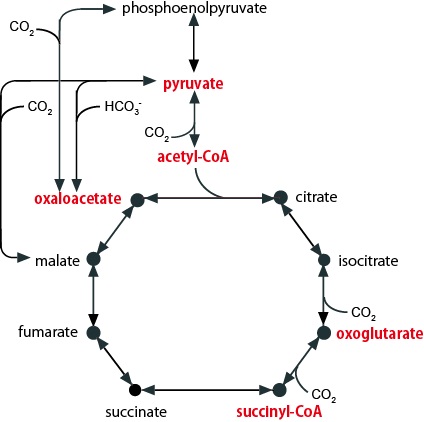Multi-omics research (*1) on Thermosulfidibacter (isolated from a hydrothermal field in the Southern Okinawa Trough) has enabled the discovery of possibly the most primordial form of tricarboxylic acid (TCA) cycle.

The TCA cycle is a key metabolic mechanism essential for most organisms. It dates back to the appearance of the last common ancestor on Earth and is considered to be “one of the earliest lines of metabolism” since the initiation of chemical evolution (Fig. 1). While the TCA cycle might exist in several forms, there are various arguments concerning its primordial composition at the time when life began on earth.
The research group has discovered that the thermophilic bacterium Thermosulfidibacter takaii (Fig. 2, hereinafter referred to as “Thermosulfidibacter”) located in a basal position of the bacterial has a novel TCA cycle, possibly the most primitive form yet known. Multi-omics analyses, including a novel method in metabolomics, have revealed that Thermosulfidibacter has a reversible TCA cycle, that can flexibly change the reaction direction depending on available carbon sources, regardless of being under autotrophic (*2) or mixotrophic (*3) conditions (Fig. 3). Until date, no other organism has been found to exhibit both carbon fixation (autotrophy) and decarboxylation (heterotrophy) functions in the TCA cycle, using the same set of enzymes. Among the TCA cycles, the one observed in Thermosulfidibacter is “exotic” due to its ability to conveniently revert the direction of the reaction in response to dynamically fluctuating environmental conditions, and it is thought to exhibit characteristics of the most basal form of the TCA cycle.
Although the perpetual question, of whether the initial forms of life were autotrophic or heterotrophic, remains to be answered (Fig. 4 linked below), the characteristics of the primordial TCA cycle revealed in this study strongly suggest the possibility of the birth of mixotrophic life that could vary its metabolism flexibly according to the abundance of available organic and inorganic carbons on the primordial Earth.
This study project was led by Dr. Takuro Nunoura of the Research and Development Center for Marine Biosciences at the Japan Agency for Marine-Earth Science and Technology (JAMSTEC) (president, Asahiko Taira) in collaboration with Hokkaido University (president, Toyoharu Nawa), Kyoto University (president, Juichi Yamagiwa), and the National Institute of Technology and Evaluation (NITE) (president, Takashi Tatsumi)







